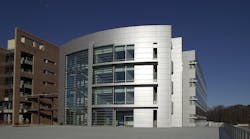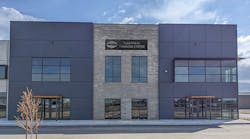The U.S. market for building automation equipment is set to grow by more than 40% within a five-year period ending in 2017, spurred by the need in commercial buildings for more efficient energy consumption, according to a new report from IHS, Inc.
With electricity rates on the rise, driven by increasing wholesale prices and investments in renewable sources of energy, demand for lower energy consumption in buildings is bound to occur, the findings in the report entitled “Building Automation Equipment” suggest.
All told, the U.S. building automation systems market will reach a projected $1.65 billion by year-end, up 5% from $1.57 billion in 2012. Solid growth ranging from 7% to 9% will follow in the next four years, with industry revenue forecast to hit $2.24 billion by 2017, equivalent to a 43% increase from 2012, as shown in the attached figure.
The spiraling cost of electricity is a major factor in the operational efficiency of a commercial building structure, which explains why building automation systems could play an important role. Prices for U.S. retail electric power will increase by 8 percent from 2012 to 2020, IHS CERA forecasts, with a sizable proportion of the increase in price related to the investments being made by the market in renewable energy.
A similar story is unfolding in Germany, where the Energiewende policy is promoting the move away from nuclear and fossil-fuel power generation and toward renewable sources of energy. Such investments are driving up the cost of energy overall and adding pressure to the already stretched operational budgets of many commercial and government organizations.
“With budgets cut and many large companies struggling to grow at more than 5% on an annual basis, the higher cost of electricity could prove to be a major headache for commercial and government building owners,” said Sam Grinter, market analyst for the Building Technologies group at IHS.
The solution to rising energy prices
In particular, buildings consume huge quantities of energy through heating, ventilation and cooling, Grinter noted. “Making buildings as efficient as possible is crucial to driving down energy consumption. And one way to increase energy efficiency is to install an integrated building automation system,” Grinter noted.
Building automation systems centrally manage the heating, ventilation and air conditioning (HVAC) systems of a structure. Compared to more basic mechanisms, building automation systems can save a considerable amount of energy consumption, via scheduled periods of heating or through cooling controlled by a thermostat, to cite two examples. Some vendors of building automation systems claim that energy savings of more than 30 percent can be obtained when evaluated against conventional HVAC systems.
This is why building owners will increasingly look to building automation systems to achieve savings on energy consumption, especially as the cost of electricity keeps going up, IHS believes.



